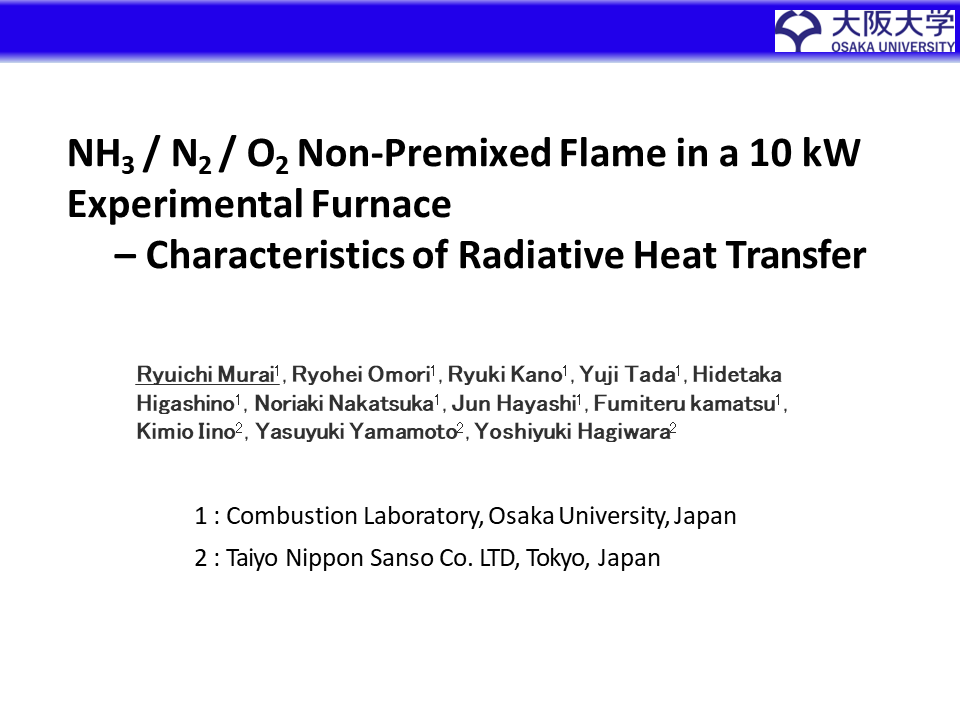Presentation
NH3 / N2 / O2 Non-Premixed Flame in a 10 kW Experimental Furnace – Characteristics of Radiative Heat Transfer
There are severe issues on increasing amount of carbon dioxide (CO2) emission in the world. Many studies are devoted on alternative fuels. One of superior candidates is the utilization of hydrogen energy which can realize a low-carbon and hydrogen-based society. Ammonia might play an important role which is zero emission of CO2, and is useful for hydrogen energy carrier as a clean energy. Additionally, ammonia is an easily-liquefiable fuel with pressure of about 0.86 MPa and temperature of 293 K. Commercially, ammonia is produced in large quantity by the Haber–Bosch process. It is also to be produced by using catalyst…

